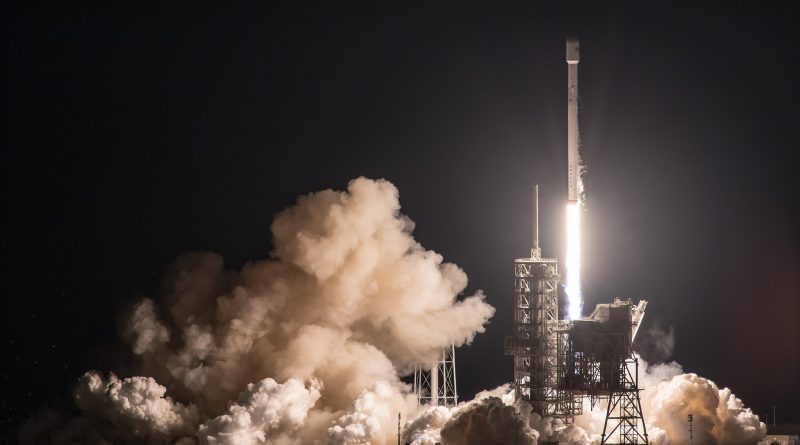Expendable Falcon 9 successfully lifts heaviest Geostationary Payload to Date
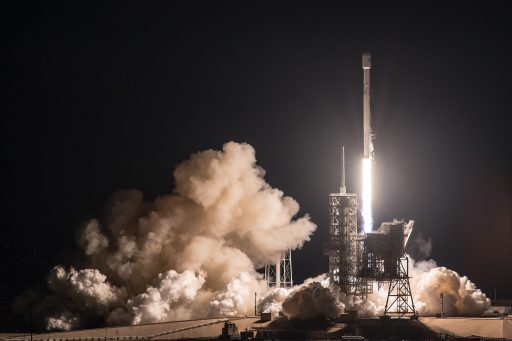
SpaceX’s Falcon 9 rocket lit up the night skies over Florida’s Space Coast on Thursday, embarking on a rare expendable mission with the heavy EchoStar 23 communications satellite. Checking off its third success of the year, Falcon 9 delivered its heaviest payload to date to Geostationary Transfer Orbit – leaving no propellant reserve for the powered return of the rocket’s booster.
Falcon 9 blasted off from Launch Complex 39A at the Kennedy Space Center at 6:00 UTC, thundering into a clear night after a launch attempt earlier in the week had to be scrubbed due to weather. Departing the Space Coast, Falcon 9 began heading south east on the standard route to Geostationary Transfer Orbit – firing the nine Merlin 1D engines on its first stage for just over two and a half minutes before the second stage took over for an initial burn of five and a half minutes to reach a Parking Orbit. The second stage re-started 26 minutes into the flight after the rocket passed over the Atlantic Ocean to boost the satellite into its highly elliptical target orbit.
EchoStar-23 was sent on its way 34 minutes after liftoff into what was reported to be a perfect orbit, starting out on a 15-year mission as part of EchoStar’s 20+-satellite fleet in Geostationary Orbit, beaming TV and data to users in Brazil.
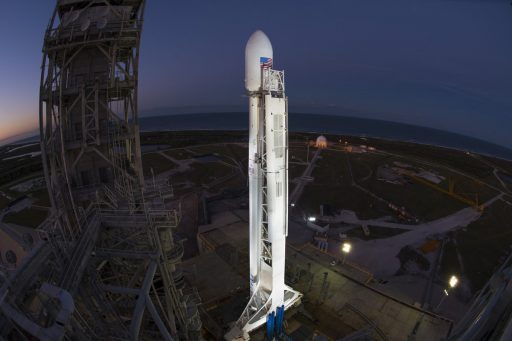
A legless SpaceX rocket is a rare species in this day and age after the company made great strides in its efforts to regularly recover and re-use Falcon 9 first stages, currently holding an inventory of eight flown rocket stages with one in the final phase of preparing to fly to the edge of space and back after having made the same trip last year. Thursday’s mission was one of the last expendable launches on SpaceX’s manifest as Falcon 9 Block 5, debuting later this year, will offer the performance needed to fly such missions with a booster recovery while Falcon Heavy, also set for its maiden flight in 2017, will handle missions with even higher performance requirements.
Thursday’s launch was the first legless Falcon 9 to fly since April 2015 when SpaceX delivered Turkmenistan’s first satellite to Geostationary Transfer Orbit. The mission also marked the first fully expendable rocket launch from LC-39A in over four decades – the last one was in 1973 with Saturn V and Skylab followed by the Shuttle’s tenure.
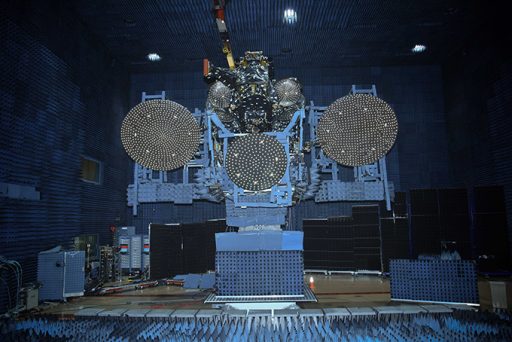
EchoStar-23 with a reported launch mass of 5.5 metric tons is SpaceX’s heaviest GTO payload flown to date, not allowing Falcon 9 to save sufficient propellants for an attempt to land on the company’s Autonomous Spaceport Drone Ship that was forced to sit this launch out in port.
AMOS-6, lost in the September 1st explosion of a Falcon 9, also had a reported launch mass of 5,500kg and would have attempted a challenging Drone Ship recovery, however, changes implemented in the wake of the failure reduced the rocket’s performance, placing the EchoStar-23 mission outside the envelope for a propulsive return. These changes include the addition of a pressurant vessel on the second stage to allow a more conservative Helium load in terms of pressure and temperature – increasing the vehicle’s dry mass and reducing overall performance but avoiding volatile conditions that can lead to sudden combustion of liquid or solid oxygen with the carbon overwrap of the gas tanks.
SpaceX hopes to eventually switch back to the higher-performance design after production of the COPVs can be tweaked to avoid cases of buckling that was identified as a key suspect in the September anomaly. Falcon 9 Block 5 – implementing a slight performance boost and modifications for more efficient reuse – will be able to lift 5.5 metric tons into Geostationary Transfer Orbit in its reusable configuration.
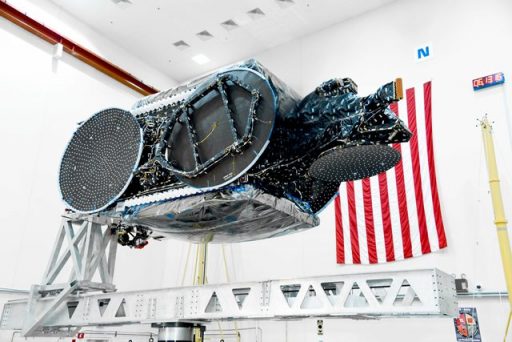
EchoStar-23 was built by Space Systems Loral and is operated by EchoStar Corporation as part of a global fleet of telecommunications satellites. Based on the flight-proven SSL-1300 platform, EchoStar-23 resurrected the chassis of the CMBStar satellite project initiated in 2006 as a cooperation between EchoStar and the Chinese government to provide mobile video services during the Beijing Olympics in 2008. The program was abandoned in early 2008 after it became clear the satellite would not be operational in time for the games and the finished satellite platform went into long-term storage.
EchoStar-23 was ordered in 2014 to use the CMBStar platform and outfit it with a powerful tri-band payload hosting 32 Ku-Band transponders for direct-to-home television distribution and S- & Ka-Band components delivering data and network services.
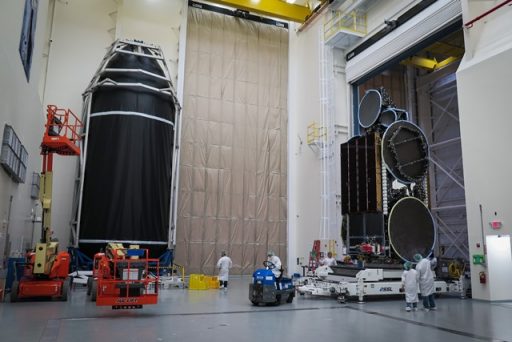
The satellite has a design life of 15 years and has been built for operation from any of EchoStar’s eight Ku-Band locations in Geostationary Orbit – giving the company the ability to flexibly relocate the satellite’s capacity based on current market demands.
The initial phase of EchoStar-23 operation is covered by a Brazilian government license to serve the country’s TV and data needs from an orbital position at 45 degrees West. EchoStar hoped to have the satellite in orbit by the end of 2016, plans ultimately thwarted by the September testing mishap which created some pressure on the satellite’s launch schedule as the government deal requires initial services from EchoStar-23 by the end of the second quarter.
With Thursday’s successful launch, EchoStar is on track to at least begin serving Ku-Band customers by the end-of-June deadline with S/Ka-Band services following shortly thereafter.
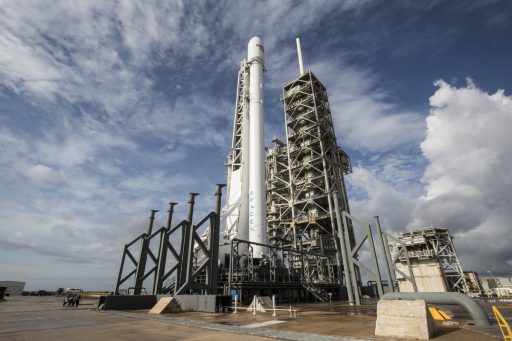
Thursday’s pre-dawn launch was the 31st for the Falcon 9, the eleventh in the Falcon 9 Full Thrust or v1.2 configuration which will be the penultimate version planned over Falcon 9’s evolution.
The first five launches flew what has become known as the Falcon 9 v1.0 which evolved to the v1.1 vehicle by stretching tanks on both stages, re-arranging the engines from a tic-tac-toe pattern to an Octaweb and upgrading to the more-powerful Merlin 1D engine. This vehicle flew fifteen times before making room for the FT version that first flew in late 2015 and introduced a further stretch of the second stage, higher-performance engines and the use of densified propellants to increase the mass of propellant to be carried in the limited tank volume.
The final iteration of Falcon 9, known as the Block 5 within SpaceX, will further increase thrust on the Merlin 1D engines and introduce modifications based on lessons learned from recovered boosters to decrease the wear and tear on returning rocket stages and enable easy refurbishment for cost-effective reuse over many missions.
Thursday’s launch employed the Falcon 9 FT design minus landing legs and grid fins, standing 70 meters tall and weighing over 540 metric tons at liftoff.
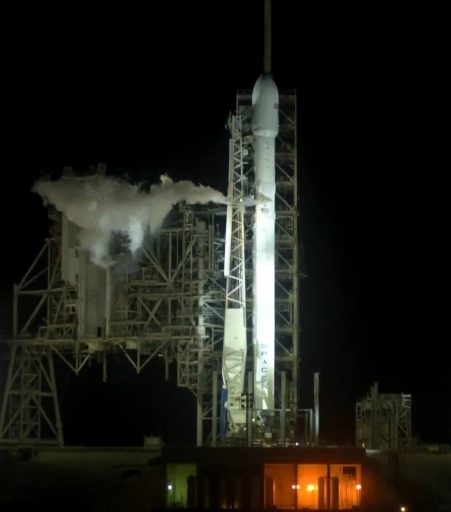
Flood lights were pointed at the Falcon 9 standing atop its KSC launch pad as night set in on Wednesday with teams already in the midst of a lengthy countdown timeline to first power up the various launch vehicle systems for detailed testing before preparing the rocket for tanking and clearing out the launch complex after final close outs were complete. The count was very clean from a technical standpoint and weather was also looking much better than Tuesday morning when Falcon’s launch attempt had to be scrubbed due to high winds. T-0 was adjusted to 6 UTC, 25 minutes into the day’s two-and-a-half-hour window to wait for upper level winds to calm down slightly.
With a clean vehicle and ideal weather conditions, the Launch Team gave the all clear for the automated countdown script to kick in. Loading the two-stage rocket with around 155 metric tons of chilled rocket-grade Kerosene started at T-70 minutes while the Liquid Oxygen system entered a final chilldown to prepare the plumbing and tanks to come into contact with the sub-cooled oxidizer at a temperature of -207°C. Filling the rocket with ~360 metric tons of densified LOX started at T-45 minutes on the first stage and second stage LOX tanking was announced by a large vent of oxidizer at T-31 minutes.
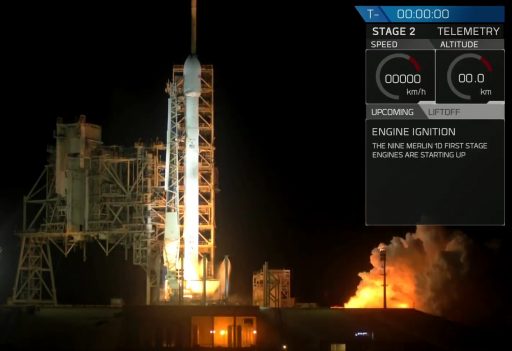
While Falcon 9 was in the midst of the tanking operation EchoStar-23 made its transition to internal power and spacecraft teams gave the all-clear for Falcon 9 to enter the countdown’s most dynamic phase at T-7 minutes, picking up with the chilldown of the nine Merlin 1D engines at Falcon’s base.
In the last countdown minutes, the rocket went through exercises of the trim valves that control the engine mixture ratio, hydraulics ramped up to pressure for final thrust vector control tests, Falcon 9 transferred to battery power, the flight termination system was armed and the Strongback let go of the rocket and was primed for a rapid kickback at T-0.
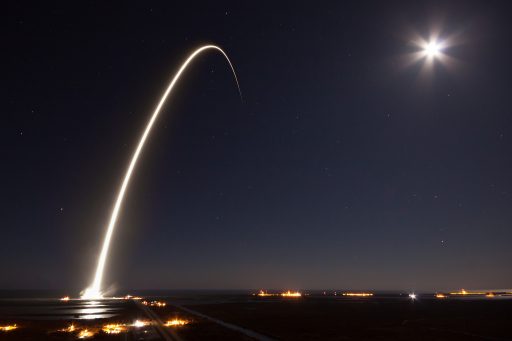
Falcon 9 assumed full control of the countdown at T-1 minute and oversaw the pressurization of its tanks leading up to the hands-off point for ground controllers at T-10 seconds. Flames erupted from the rocket’s business end at T-3 seconds as all nine Merlins soared to a collective liftoff thrust of 694 metric ton force, under the close watch of computers to ensure the rocket was ready to take flight.
Falcon 9 began rising from its historic launch pad at 2 a.m. local time, lighting up the night skies over Cape Canaveral as it balanced vertically for the first 16 seconds of the flight before pitching and rolling to attain its precise launch azimuth to the east-south-east. Burning 2,450 Kilograms of propellant per second, Falcon 9 accelerated beyond the speed of sound just after passing T+1 minute and throttled down its engines to reduce stress on the vehicle as it passed Maximum Dynamic Pressure at T+1 minute and 16 seconds.
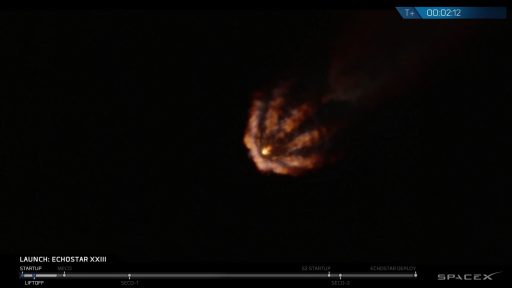
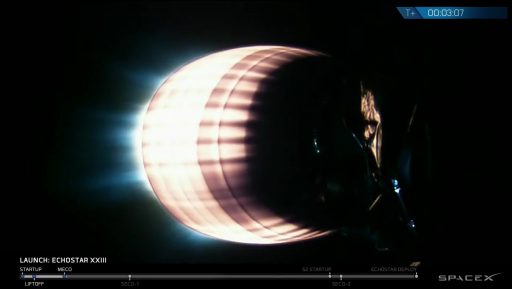
The first stage continued firing until T+2 minutes and 43 seconds, using up all of its propellant to generate the extra bit of performance needed to haul the heavy satellite to its orbital destination. Falcon’s booster accelerated the rocket to 2.67 Kilometers per second versus 1.65km/s for a high-margin recovery mission that would require engine shutdown around 20 seconds earlier to preserve sufficient propellant for a return to Cape Canaveral.
MECO was followed four seconds later by the pneumatic stage separation, sending the first stage clear of the extended nozzle of the MVac engine for ignition at T+2:55 on a burn of just over eight and a half minutes. This first burn of the 95,000 Kilogram-force MVac was tasked with lifting the vehicle into a Low Earth Parking orbit for a coast phase toward the equator as part of a standard two-burn GTO delivery.
The protective payload fairing was jettisoned shy of T+4 minutes when the stack had reached 115 Kilometers in altitude where aerodynamic forces were no longer a threat to the satellite. MVac showed excellent performance during its burn and shut down as planned at T+8.5 minutes, marking the start of 18 minutes of coasting so that the second burn could occur while passing over the equator to place the high point of the injection orbit above the equator on the opposite side of the planet – standard practice for GTO launches to ease the process of maneuvering the satellite into its operational orbit.
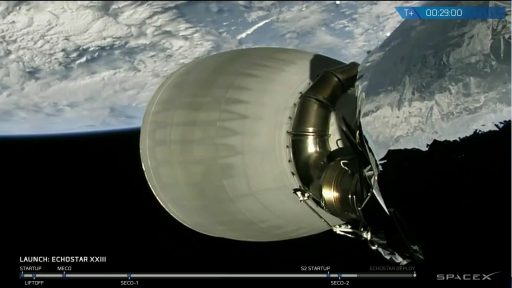
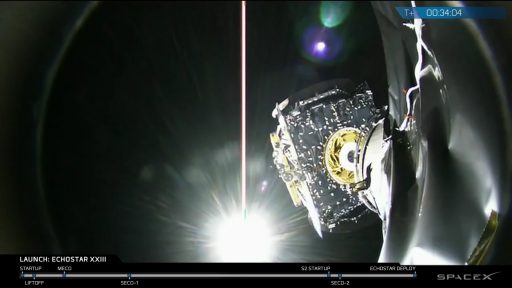
Falcon 9 re-appeared 24 minutes into the flight after traversing a radio black zone over the Atlantic and re-started the MVac 26 minutes and 19 seconds after launch, tasked with a minute-long burn to accelerate the rocket by 2.1 Kilometers per second and lift EchoStar-23 into Geostationary Transfer Orbit. The engine entered a gradual throttle segment to maintain 5Gs on the vehicle toward the end of its burn when the second stage was getting lighter and lighter.
Orbital parameters were reported nominal after the end of the second burn and seven minutes of maneuvering prepared for the spring-loaded separation of the spacecraft at T+34 minutes. Drifting away from the Falcon 9 second stage, EchoStar-23 sets out to complete several orbit-raising maneuvers in the coming days and weeks to transition to Geostationary Orbit where it will complete three months of testing at 86.4°W before moving to its initial operational position covering Brazil.
Thursday’s launch marked the opening of a busy period at Florida’s Space Coast with the next launch set for Saturday, involving a ULA Delta IV rocket lifting the WGS9 communications satellite for the U.S. Military to be followed by an NET March 24 launch of Atlas V with the SS John Glenn, carrying out Orbital ATK’s seventh operational Cygnus mission to the ISS.
SpaceX is working towards a late March launch of SES-10 marking the company’s first re-flight mission, however, that date is subject to change based on pad turnaround and vehicle processing. Two SpaceX missions are on the books for April as the company aims to keep up a two-week launch pace for much of this year to deal with a significant backlog of missions.

